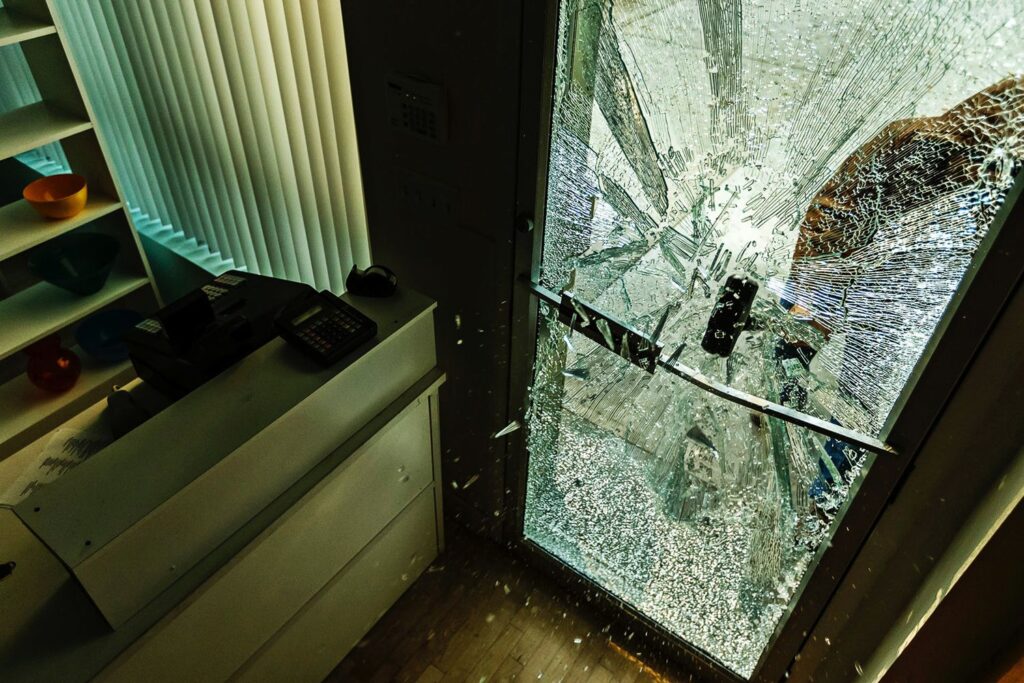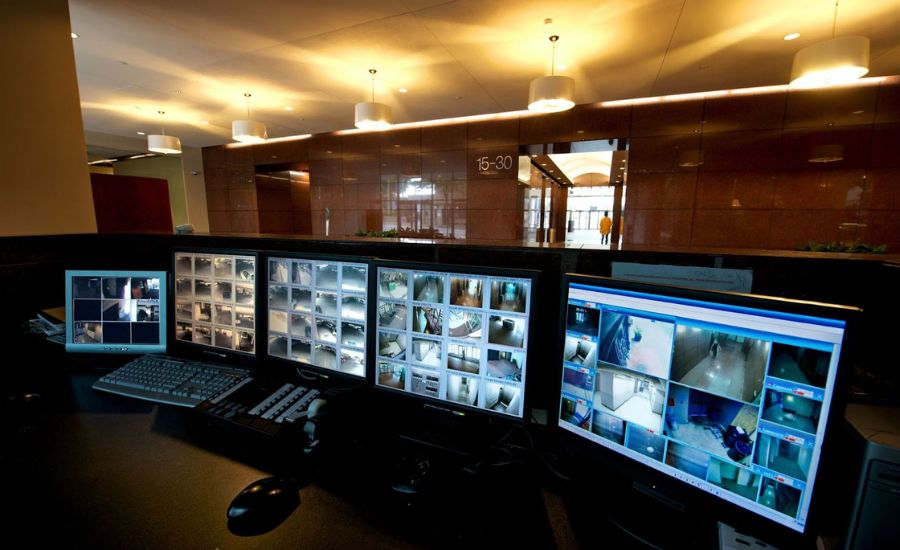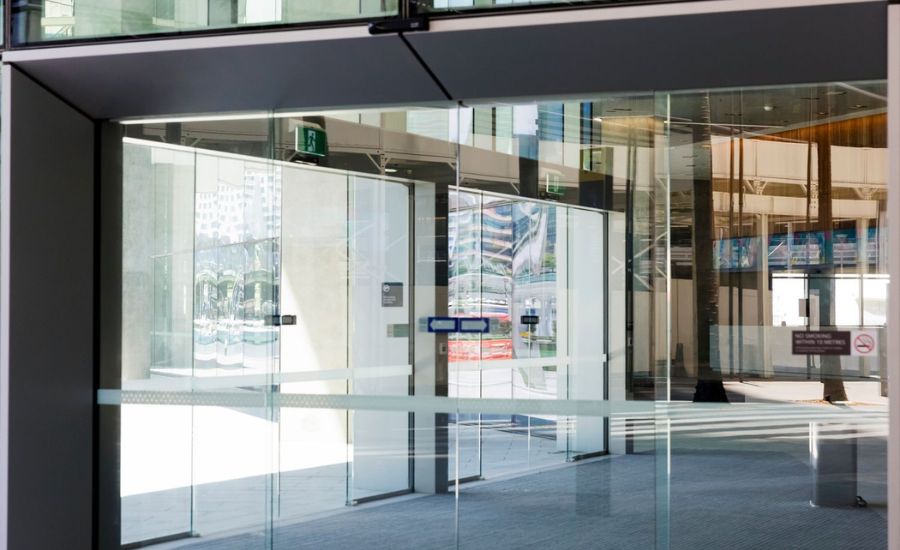Written By: Brad Campbell | January 23, 2023
Access control is one of the most important and most fundamental concepts in commercial security.
Without some sort of access control in place, it’s very easy for anyone to gain entry to your facility, which can lead to theft or worse.
Almost all types of commercial facilities can benefit greatly from installing door access control systems at all entry points that get used.
But, people often overlook the fact that there are ways to gain access other than by opening a door from the outside…

In broad terms, a door access control system restricts who can pass through certain doors. In this sense, even a door lock can be considered an access control system, because only people who have the key can pass through the locked door.
However, when we talk about door access control, we’re usually referring to something more secure than a traditional lock and key system.
Access controlled doors can employ a variety of different security mechanisms, which allow certain people to gain entry using something other than a standard key.
Here are a few examples of different types of access control for doors:
These types of access control systems strictly limit who can enter a building from the outside, or who can enter specific rooms or areas within a facility.
For safety reasons, access controlled doors are equipped with some type of egress mechanism on the inside that allows anyone already inside to automatically open the door to exit easily and quickly in the event of an emergency.
Some examples of common egress mechanisms are:
Door access control systems are there to keep bad actors out of your business or facility.
The most obvious threat to all types of commercial properties is forced entry and burglary, and access control systems play a big role in securing potential entry points and keeping criminals out.
But there’s also the risk of an active threat scenario, which is when an armed individual targets a building and forces entry to harm those inside.
In this type of scenario, access controlled doors can help keep attackers out altogether or greatly restrict their movement inside a building, protecting people inside and minimizing the risks of injury and loss of life.
If you operate a high security facility, access control also lets you restrict who has access to certain areas based on individual security clearances.
Used alongside other components of a comprehensive commercial security system, such as security glazing, monitored surveillance systems and alarms, and security personnel, access control systems help ensure a very high level of security.

Access control systems restrict who can open specific doors from the outside, but this doesn’t mean that these doors are necessarily forced entry proof.
If a door is located next to a window, an intruder could easily smash the window and reach through to open the door from the inside using its egress mechanism. Or, if the door itself is all glass, a bad actor can break it and step right through.
So, how can you supplement door access control systems to ensure their effectiveness?
The answer is actually quite simple: by fortifying vulnerable glass doors and windows with polycarbonate security glazing.
Polycarbonate security glazing can be retrofitted into or onto your doors’ and windows’ existing framing systems, so there’s no need to remove the existing glass and replace it with security glass.

This special type of polycarbonate looks and feels very similar to standard window glass, but the thermoplastic is incredibly durable and impact resistant.
In fact, polycarbonate glazing shields are virtually unbreakable. They fortify your doors and windows, without making them look fortified.
If a would-be intruder attempts to force entry by breaking a pane of glass with a heavy hand tool, their attempts will just bounce right off the polycarbonate.
Even the most determined, prolonged attacks using common burglary tools, such as pry bars and sledgehammers, will be met with frustration. This usually deters would-be intruders very quickly, or gives the authorities time to arrive and arrest them or neutralize the threat.
For most commercial applications, we highly recommend our ArmorPlast® AP25 polycarbonate glazing shields — our flagship product.
AP25 is containment-grade (non-ballistic) polycarbonate, meaning that it is not intended to stop bullets.
However, even if riddled with bullets, AP25 will not noticeably diminish in strength or allow any part of an attacker's body to pass through.
Therefore, when used to reinforce access controlled doors and nearby windows, AP25 ensures that a would-be intruder cannot reach through to open them from the inside.
AP25 is ideal for:
If different types of theft, including burglary, smash-and-grab theft, and looting, are your main concern, AP25 should offer more than enough protection against these threats.
But, if active threats are your primary concern, we also offer ballistic-grade ArmorPlast® security glazing, and have models with a range of different UL 752 ballistic resistance ratings.
Ballistic-grade ArmorPlast® is capable of stopping multiple rounds from different types of firearms, ranging from 9mm handguns to AK-47 assault rifles firing military-style rounds.
Although any type of bullet-resistant security glazing can eventually be penetrated by rounds, ArmorPlast® remains a barrier to forced entry during an attack, keeping the bad guys out and protecting the lives of your people inside.
If you’re ready to ensure your access control systems are as secure as they need to be, contact us today to discuss reinforcing your vulnerable doors and windows with our premium line of security glazing products.

HOW CAN WE HELP YOU?
